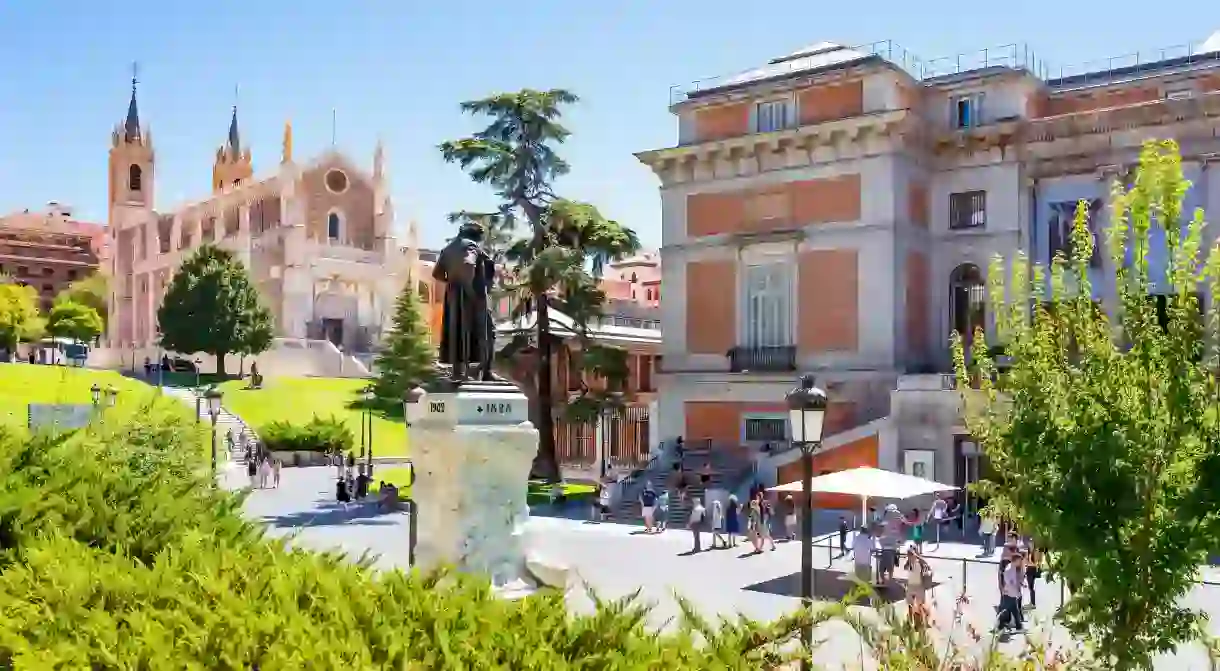The Best Museums in Madrid, According to a Local Art Historian

From the world-famous to the practically unheard of, here are the best museums in Madrid that focus on art and culture, according to local art historian Dr Carmen Fracchia.
Spain’s sprawling capital city of Madrid is particularly famous for its grand classical art museums, with the very best and grandest being the inimitable Museo Nacional del Prado, also known as the National Museum. Experts say it houses one of the most important European art collections in the world, and for 200 years, it has been ranked alongside the Louvre and the Victoria & Albert Museum as one of the most popular cultural attractions in Europe. For art lovers, there’s so much more to explore beyond the Prado. From off-the-beaten-track museums to culturally diverse galleries, Madrid-based art historian Dr Carmen Fracchia gives Culture Trip her tips and advice on the best museums to explore in Madrid.
Museo Cerralbo
Museum

Museo Cerralbo in the hip Malasaña neighbourhood isn’t “very well known” by travellers, according to Dr Fracchia, but its elaborate setting and unusual collections make it a must-visit. “This is an absolute visual feast,” she says. “The main staircase belonging to this stately home was one of the most scenographic spaces in 19th-century mansions in Madrid. First-rate European and Spanish paintings and objects from all over the world are displayed in this former opulent residence,” which belonged to an eminent Spanish archaeologist and politician, Enrique de Aguilera y Gamboa, 17th Marquis of Cerralbo, who died in 1922. Take a moment’s respite in the house’s ballroom, a maze of opulent mirrors, elaborate wall etchings and plush furnishings.
Museum of the Americas
Museum

In the 1500s, Spain colonised the Americas, taking on the Aztec Empire. Dr Fracchia explains that this museum, set within the well-to-do Chamberí neighbourhood, has an incredible insight into what life was like for Latin Americans before the conquest. There’s a unique collection of historical paintings, as well as sculptures, textiles, manuscripts, furniture, masks and objects from before the Spanish conquest. Dr Fracchia recommends “finding the exquisite Mexican folding screens decorated with Japanese golden clouds, and paintings made of multicoloured feathers or mother-of-pearl shells.”
National Museum of Decorative Arts
Museum

One of the oldest museums in the city, the National Museum of Decorative Arts celebrates inspiring design and decoration in all its forms. Dr Fracchia adores the “unmissable tiles from the kitchen of a house dating from Valencia in 1775, depicting the fashion of the time, which can be found on the fourth floor.” The museum houses 65,000 objects mainly from Spain, Europe and the East, distributed in chronological periods. On the second and third floors, the collection includes artefacts from the Spanish and Portuguese empires, giving insight into what the fashions and styles were like in places such as Goa and China in the 1500s and beyond.
Prado Museum
Museum

Thyssen-Bornemisza National Museum
Museum

Museo Nacional Centro de Arte Reina Sofía
Museum

Museo Lázaro Galdiano
Museum

José Lázaro Galdiano was a famous Madrid-based businessman and passionate art collector. When he passed away in 1947, his extensive and intriguing personal collection was turned into a public gallery in his former home in the stately Salamanca district. Set up in an impressive Neo-Renaissance Italian stone mansion, this once private collection houses more than 12,000 archaeological items, jewellery, ceramics, paintings and sculptures from the sixth century BC to the 20th century. “Concentrate on the wonderful collection of paintings by Carreño, El Greco, Goya, Murillo, Ribera and Velázquez,” says Dr Fracchia.













